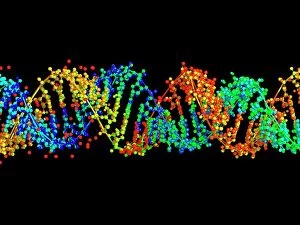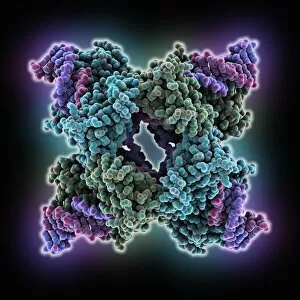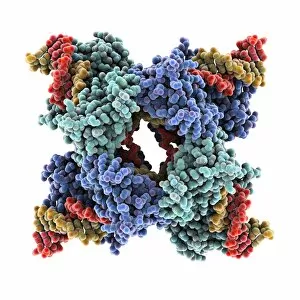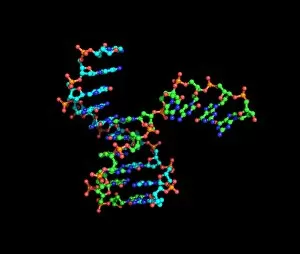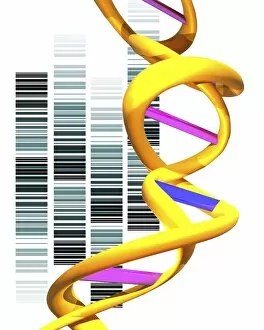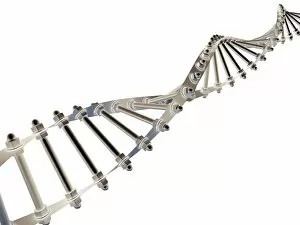Sugar Phosphate Backbone Collection
The sugar phosphate backbone is a fundamental component of the double-stranded RNA molecule and DNA Holliday junction
For sale as Licensed Images
Choose your image, Select your licence and Download the media
The sugar phosphate backbone is a fundamental component of the double-stranded RNA molecule and DNA Holliday junction. It forms the structural framework that holds these molecules together, providing stability and support for their intricate functions. In the molecular model F006 / 9285, we can observe the elegant arrangement of sugar and phosphate groups, forming a continuous chain along with nitrogenous bases. This backbone acts as a strong yet flexible scaffold, allowing for the formation of complex secondary structures. Enzymes catalyzing DNA recombination play a crucial role in manipulating this sugar phosphate backbone to facilitate genetic rearrangements. These enzymes, such as C016 / 0725 and C016 / 0724, are capable of breaking and rejoining strands at specific sites within the DNA molecule. Through their precise actions on the sugar phosphate backbone, these enzymes enable processes like homologous recombination and repair of damaged DNA. They ensure accurate transmission of genetic information during cell division and promote genetic diversity through exchange between different chromosomes or sister chromatids. The DNA Holliday junction serves as an important intermediate structure during these recombination events. It involves four strands coming together in a cross-like configuration held by interactions between their respective sugar phosphate backbones. Enzymes acting on this junction resolve it into separate chromosomes or sister chromatids once recombination is complete. Understanding the intricacies of the sugar phosphate backbone and its interaction with enzymes catalyzing DNA recombination provides valuable insights into essential biological processes like replication, repair, and evolution. By unraveling these molecular mechanisms at such minute levels, scientists continue to unlock nature's secrets hidden within our very own genetic code.

